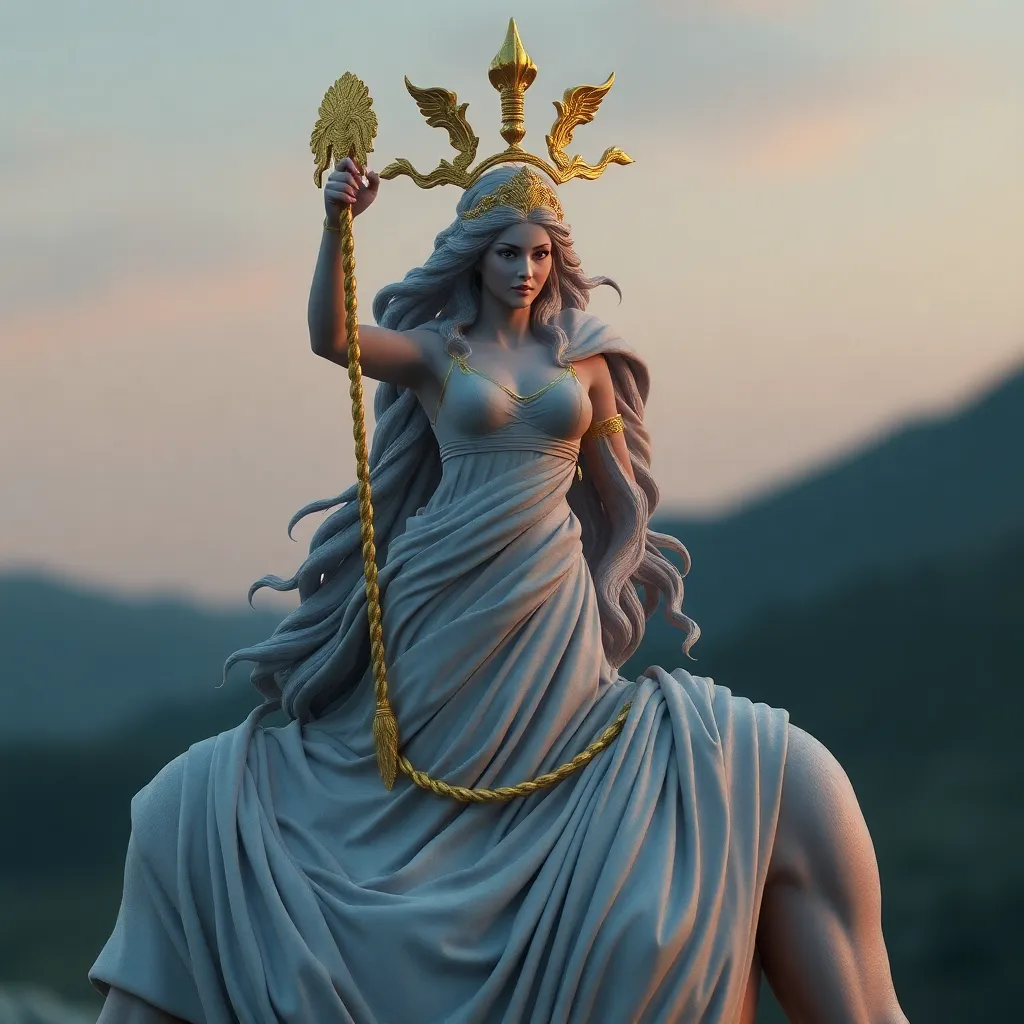The Transformation of Hera in Modern Adaptations
I. Introduction
Hera, the queen of the gods in Greek mythology, is a figure steeped in complexity and contradiction. Renowned for her beauty, intelligence, and fierce protectiveness over marriage, she stands as a symbol of familial values. Yet, she is equally infamous for her jealousy and vengeful nature, particularly towards her husband Zeus’s numerous lovers and offspring. This multifaceted nature has made her a central figure in ancient Greek stories, where her character is often a mix of strength and vulnerability.
The purpose of this article is to explore Hera’s transformation in modern adaptations. As contemporary storytellers reinterpret her character, they challenge traditional narratives and offer new perspectives that reflect today’s cultural values and gender issues.
II. Traditional Portrayals of Hera
In classical mythology, Hera is primarily recognized as the goddess of marriage and family. Her association with these themes is evident in various myths, where she often embodies the ideal of marital fidelity and commitment. However, her identity is complicated by her tumultuous relationship with Zeus, who is notorious for his infidelities.
Some key aspects of Hera’s traditional portrayals include:
- Hera as the Protector of Marriage: Hera’s role as the goddess of marriage made her a symbol of domesticity and loyalty. She presided over weddings and offered protection to married women.
- The Vengeful Wife: Hera’s jealousy often manifests in her vengeful actions against her husband’s lovers and their children. Iconic tales include her punishment of Hercules, a demigod son of Zeus.
- Thematic Representations: In classical literature and art, Hera is frequently depicted as a regal figure, often adorned with a crown and scepter, symbolizing her status as queen of the gods.
III. Shifts in Characterization in Literature
In contemporary literature, Hera’s character is increasingly reinterpreted, allowing for a more nuanced understanding of her motivations and experiences. Many modern authors strive to highlight her complexity, often portraying her as a sympathetic figure rather than merely a jealous wife.
Examples of this shift include:
- Sympathetic Portrayals: Novels like “The Silence of the Girls” by Pat Barker give voice to female characters traditionally sidelined in mythology, allowing Hera to emerge as a woman shaped by her circumstances.
- Feminist Literature: In works by authors such as Madeline Miller, Hera is depicted as a complex character grappling with her identity and power, challenging the patriarchal narratives surrounding her.
IV. Hera in Film and Television
Hera’s representation in film and television has also evolved, showcasing her in various lights across popular media. From animated adaptations to blockbuster films, her character has been subject to diverse interpretations.
Some notable examples include:
- Clash of the Titans: In this classic film, Hera is portrayed as a powerful and protective figure, yet her character is often overshadowed by male heroes.
- Wonder Woman: The depiction of Hera in this film aligns more closely with her traditional role while also emphasizing her strength and wisdom.
The impact of visual storytelling has been significant, allowing audiences to engage with Hera in a more immediate and emotional manner. Directors often explore her internal conflicts, making her a character of depth rather than a mere antagonist.
V. Hera in Graphic Novels and Comics
Graphic novels and comics have provided a unique medium for the exploration of Hera’s character. Artists and writers utilize visual storytelling to convey her emotions and complexities.
Some significant works featuring Hera include:
- The Wicked + The Divine: This series reimagines various gods, including Hera, in a modern context, exploring themes of celebrity, power, and mortality.
- Wonder Woman Comics: Hera often appears in Wonder Woman’s storylines, where she is depicted as both an ally and adversary, adding layers to her character.
These adaptations often take artistic liberties, introducing modern themes of empowerment and identity that resonate with contemporary audiences.
VI. The Role of Hera in Video Games
In the realm of video games, Hera’s character has been adapted to fit interactive storytelling models, allowing players to engage with her in unique ways. She appears in various gaming franchises, bringing her mythological attributes to life.
Key examples include:
- God of War: In this critically acclaimed series, Hera is portrayed with a darker edge, embodying jealousy and wrath as she interacts with the protagonist.
- Smite: Hera is a playable character, and her abilities reflect her mythological attributes, allowing players to experience her power directly.
The portrayal of Hera in these games often shifts, allowing for a more interactive exploration of her character, whether as a playable protagonist or a complex NPC.
VII. Cultural Impact and Reception
The public perception of Hera in modern adaptations has been shaped by changing attitudes towards gender and power. As adaptations continue to emerge, discussions around her character often include feminist readings and cultural significance.
Some points of discussion include:
- Feminist Readings: Many contemporary interpretations challenge traditional views of Hera, portraying her as a symbol of female strength and resilience.
- Cultural Significance: Hera’s transformation reflects broader societal changes, highlighting the importance of women’s narratives in mythology.
These adaptations influence how contemporary audiences view mythology, encouraging a more critical examination of gender roles and power dynamics.
VIII. Conclusion
Hera’s evolution across various media showcases a transformation from a one-dimensional character to a complex figure embodying strength, vulnerability, and resilience. This journey reflects changing societal attitudes towards women and power, offering new narratives that resonate with modern audiences.
Understanding Hera’s transformation is significant in comprehending broader themes of gender roles and identity in mythology. As storytelling continues to evolve, the future of Hera in adaptations promises to explore even deeper dimensions of her character, inviting audiences to engage with her story in innovative ways.




